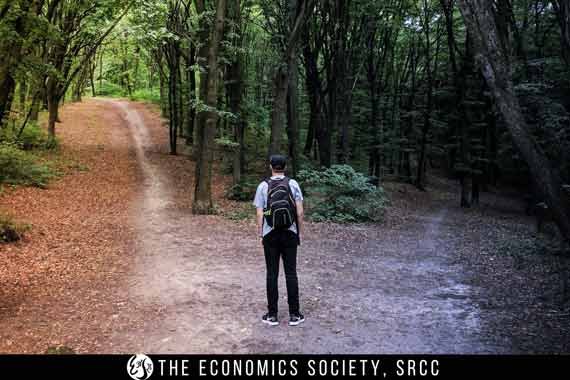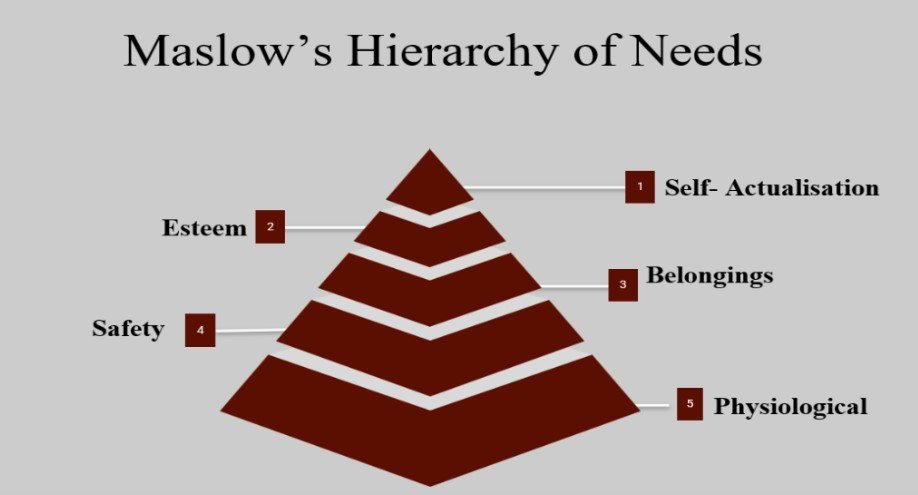There are seven life’s most basic questions: Who am I? Why do things happen? What is the purpose of life? What is human nature? What is sacred? Who are we as a people? Where did we come from and where are we going? Two stories can be constructed, following the cultural investigative journalist Charles Eisenstein, as answers to these questions, namely the Story of Separation, and the Story of Interbeing. The former characterizes our existing reality in historical perspective. We are doomed with this reality of social and ecological crisis. And the latter is the utopia we will have to choose to stand in.
It will make the world a better place and take us into the Age of Reunion, the ecological age, the beautiful world of the gift. If you have already had a breakdown and are gripped by cynicism, frustration and paralysis like many people are feeling, then the way out is the Sacred Activism as suggested by Eisenstein, who tells the principles of these two stories as follows. Consider the Story of Separation. You are a separate individual among other separate individuals in a universe that is separate from you as well. You are a Cartesian mote of consciousness looking out through the eyes of a flesh robot, programmed by its genes to maximize reproductive self-interest. You are a bubble of psychology, a mind (whether brain-based or not) separate from other minds and separate from matter. Or you are a soul encased in flesh, separate from the world and separate from other souls. Or you are a mass, a conglomeration of particles operating according to the impersonal forces of physics. The impersonal forces of physics act upon a generic material substrate of fundamental particles. All phenomena are the result of these mathematically determined interactions. Intelligence, order, purpose, and design are illusions; underneath it all is merely a purposeless jumble of forces and masses. Any phenomenon, all of movement, all of life, is the result of the sum total of forces acting upon objects.
There is no purpose, only cause. The universe is at bottom blind and dead. Thought is but an electromechanical impulse; lobe but a hormonal cascade that rewires our brains. The only purpose of life (other than what we manufacture ourselves) is simply to live, to survive and reproduce, to maximize rational self-interest. Since we are fundamentally separate from each other, my self-interest is very likely at the expense of your self-interest. Everything that is no-self is at best indifferent to our well-being, at worst hostile. To protect ourselves against this hostile universe of competing individuals and impersonal forces, we must exercise as much control as possible. We seek out anything that furthers that aim; for example, money, status, security, information, and power—all those things we call “worldly”. At the very foundation of our nature, our motivations, and our desires, is what can only be called evil. That is what a ruthless maximize of self-interest is.
Since the blind, ruthless pursuit of self-interest is antisocial, it is important to overcome our biological programming and pursue “higher things”. A holy person does not succumb to the desires of the flesh. He or she takes the path of self-denial, of discipline, ascending into the realm of spirit or, in the secular version of this quest, into the realm of reason and the mind, principles and ethics. For the religious, to be sacred is to be otherworldly; the soul is separate from the body, and God lives high above the earth. Despite their superficial opposition, science and religion have agreed: the sacred is not of this world. We are a special kind of animal, the apex of evolution, possessing brains that allow the cultural as well as the genetic transfer of information. We are unique in having (in the religious view) a soul or (in the scientific view) a rational mind. In our mechanical universe we alone possess consciousness and the wherewithal to mold the world according to our design. The only limit to our ability to do so is that amount of force we can harness and the precision with which we can apply it. The more we are able to do so, the better off we are in this indifferent or hostile universe, the more comfortable and secure.
We started out as naked, ignorant animals, barely hanging on to survival, living lives that were nasty, brutish, and short. Fortunately, thanks to our big brains, science replaced superstition and technology replaced ritual. We ascended to become the lords and possessors of nature, domesticating plants and animals, harnessing natural forces, conquering diseases, laying bare the deepest secrets of the universe. Our destiny is to complete that conquest; to free ourselves from labour, from disease, from death itself, to ascend to the stars and leave nature behind altogether. Now consider the Gaia Story of Interbeing. My being partakes of your being and that of all beings. This goes beyond interdependency—our very existence is relational. Therefore, what we do to another, we do to ourselves. Each of us has a unique and necessary gift to give the world.
The purpose of life is to express our gifts. Every act is significant and has an effect on the cosmos. We are fundamentally unseparate from each other, from all beings, and from the universe. Every person we encounter and every experience we have mirrors something in ourselves. Humanity is meant to join fully the tribe of all life on Earth, offering our uniquely human gifts toward the well-being and development of the whole. Purpose, consciousness, and intelligence are innate properties of matter and the universe. Interbeingness is something we can feel. Why does it hurt when we hear of another person coming to harm? Why, when we read of mass die-offs of the coral reefs and see their bleached skeletons, do we feel like we have sustained a blow? It is because it is literally happening to our selves, our extended selves. The separate self wonders, “How could this affect me?” The pain is irrational, to be explained away, perhaps, as the misfiring of some genetically coded empathy circuit meant to protect those who share our DNA.
But why does it extend so easily to strangers, even to other species? Why do we desire so strongly to serve the good of all? Why, when we achieve a maximum of personal security and comfort, are we still dissatisfied? Certainly, as a little introspection will reveal, our desire to help is not coming from a rational calculation that this injustice or that ecological disaster will somehow, someday, threaten our personal well-being. The pain is more direct, more visceral than that. The reason it hurts is it is literally happening to ourselves. To conclude, the Story of Separation has generated the present crisis of human and planetary death. In contrast, the Story of Interbeing conveys a radically different understanding of cause and effect so that we can finally create the more beautiful world our hearts know is possible—“a world where we embrace the shadow and give it name so that the healing can begin”. As Brad Blanton, author of Radical Honesty, has remarked, “We will absolutely tell the whole fucking world about it.” In light of the above, which story shall you stand in? In every new year context at least, you must reflect on these lines. Economic unfairness, climate derangement and Covid-19 pandemic have already propelled many people to definitively turn towards the Story of Interbeing.
By Annavajhula J.C. Bose,
PhD Department of Economics, SRCC
REFERENCE
Charles Eisenstein. 2013. The More Beautiful World Our Hearts Know is Possible. North Atlantic Books. Berkeley. California.




